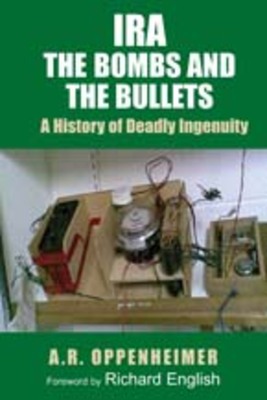The Bombs and the Bullets: a history of deadly ingenuity
Peter Berresford Ellis reviews IRA - The Bombs and the Bullets: a history of deadly ingenuity by A.R. Oppenheimer, foreword by Richard English, Irish Academic Press, ISBN 978071652895. €4.95/£19.95

How did the IRA transform itself from a few men without any weapons into a sophisticated and well-armed insurgence force, which kept one of the most highly trained and modern western armies, bogged down in guerrilla warfare for thirty years? This is the story of this book.
In 1969 the Irish Republican Army barely existed. Without weapons, it had become a debating group. Its campaign of 1956-1962 had come to an end and its chief of staff, Cathal Goulding, had persuaded the Army Council to go down a political path. Its outdated weapons had been sold off.
In 1964, the people struggling for their civil rights from the oppressive unionist regime in Northern Ireland, had began to emulate the US black civil rights movement. A Campaign for Social Justice was formed. The warning how this would turn out came in 1966 when UVF members shot dead two young Catholics and seriously wounded two others no other reason than they were Catholics.
In 1967 came the formation of the Northern Ireland Civil Rights Association. State repression followed. Peaceful civil rights marches were attacked by the paramilitary RUC and its part time auxiliary force the B-Specials. Even the UK government claimed it had no idea of the extent of the arsenal of the RUC, with automatic weapons, armoured cars and water cannons.
In fact, the Unionist regime had been spending more on its internal security than the South African apartheid regime at the same time.
Catholic areas, entire streets, were burnt forcing the biggest population movement since World War II. Catholics refugees fled across the border. The republican movement, unable to protect the Catholic population, was in a quandary. It now split into Officials and Provisionals.
Without organisation, without weapons, it could do little. The graffiti in Belfast and Derry was `IRA - I Ran Away'.
British troops were sent in to protect the Catholics from these devastating attacks in 1969. The loyalists were making all the running. The first bombing campaign in 1970 was engineered by UVF to discredit nationalists. Loyalist gunmen killed the first RUC man and loyalist gunmen killed the first British soldier.
Yet in 1970 Edward Heath's newly elected Tory government turned the situation on its head, used British troops to harass the Catholics and approved the internment without trial of thousands.The Tory government had, with a stroke, recreated the IRA.
Andy Oppenheimer's book tells how the IRA were now able to rearm and become the most sophisticated insurgency force ever faced by the British Army in their long colonial wars.
His book has a wider dimension as he surveys the republican movement since the IRB following the suppression of the 1867 insurrection, and rise of the `Fenian Dynamiters'.
As a weapons expert he is mainly concerned with the arsenal of the IRA, the bombing equipment and their weapons and how they acquired them. As a consulting editor of the NBC (Nuclear Biological Chemical) International magazine, working as a consultant on Jane's Information Group, he has knowledge of the weapons strategy and the ingenuity of the small insurrectionary force in its confrontation with the British army.
This is where this book has its greatest strength and therefore highly recommended.
Through this book we begin to see how such a force was able to remain unbeaten by the British over thirty years until, after many trials and errors, the republicans were allowed to enter a just political path towards a solution of Britain's `Irish Problem'.
Connolly Association, c/o RMT, Unity House, 39 Chalton Street, London, NW1 1JD
Copyright © 2009 Peter Berresford Ellis

